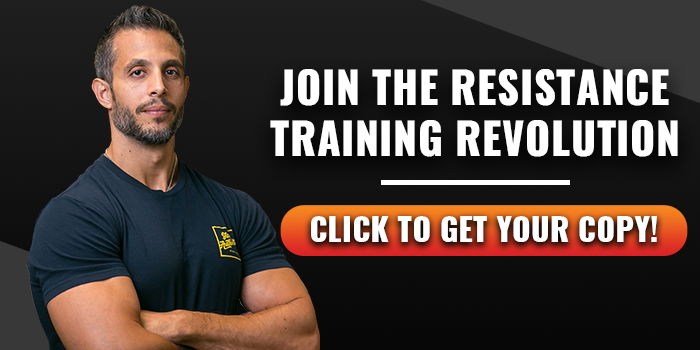Since I started working as a fitness professional in 1997, I have seen the popularity of resistance training grow year over year. This is all for good reason when you consider the tremendous health and cosmetic benefits that resistance training provides. It’s the most effective form of exercise for sculpting and shaping the body due to its muscle building effects - nothing builds muscle nearly as well. Resistance training speeds up the metabolism much more powerfully than other forms of exercise which makes it an effective fat loss strategy, especially long term. It’s also the only form of exercise that reliably raises testosterone in men and youth-promoting growth hormone in both sexes.
There are many ways to perform resistance training exercises. If you are using sufficient resistance to train your body in a way that is specifically designed to primarily build muscle and strength, you are doing resistance training. What you use to provide the resistance doesn’t matter as much as the way you are working out. Among the many ways to train with resistance, there are three that are a must, but for different reasons. All three of the ways I am going to explain to you will provide you with all of the benefits of resistance training but each method has its advantages and disadvantages.
Free Weights
Barbells, dumbbells and kettlebells are a few of the oldest forms of resistance training. People use these (usually) iron tools to provide resistance in many different ways.
PROS: Free weights build muscle and strength quickly and are the best at getting you to your highest potential. They are “free” meaning they aren’t attached to anything, so that, when used properly, they are suitable for all shapes and sizes. The strength gains that come from free weight exercises also tend to have the most carryover into the real world. For example, a free weight barbell squat will make your legs stronger in everyday activities more so than a machine leg press will. Free weights also have endless exercise options for your whole body with literally thousands of different exercises to choose from.
CONS: Free weights can take a long time to learn and get comfortable with. Beginners feel unstable and shaky with them for the first few months. They can take up a bit of space to store (especially if you have a bench and squat rack) and they are impossible to bring along when you travel.
Resistance Bands
Resistance bands look like giant rubber bands and they come in many different sizes and strengths. You typically anchor one end to something, like a door knob, and stretch the other side. The elastic stretch is what provides resistance.
PROS: Resistance bands are extremely versatile and easy to use which makes them great for beginners. They are also the best resistance training tool for travel or if you have limited space. Finally, resistance bands don’t require gravity, which means you can anchor one end and create resistance in any direction you want.
CONS: Resistance bands don’t build muscle or strength as quickly as free weights or other forms of resistance thus giving you slower results. It’s also hard to progress past a certain point when only using bands. Once you get strong, it can be hard to use bands to properly challenge your body.
Body Weight
Moving your body through space in specific ways allows you to use your own body weight as resistance. A push up is a classic example of a resistance training exercise.
PROS: Your body is always with you which makes this form of resistance training available to you no matter where you are. Training with your body over time also allows you to develop incredible body awareness and joint stability. Done properly, body weight resistance training produces mobile, limber and capable bodies. A gymnast is an example of a very high level person who is an expert at bodyweight resistance training.
CONS: Although some bodyweight exercises are more than appropriate for beginners, many are simply too challenging. For example, there are very few beginners that can do a single pull up, let alone a set of 10 reps. Bodyweight resistance training also requires more creativity to keep interesting.
There you have it, my favorite three ways to do resistance training. Truth be told, you are best served by doing a combination of all three modalities. If you want the best of all three, make sure to incorporate all of them into your weekly routine.






